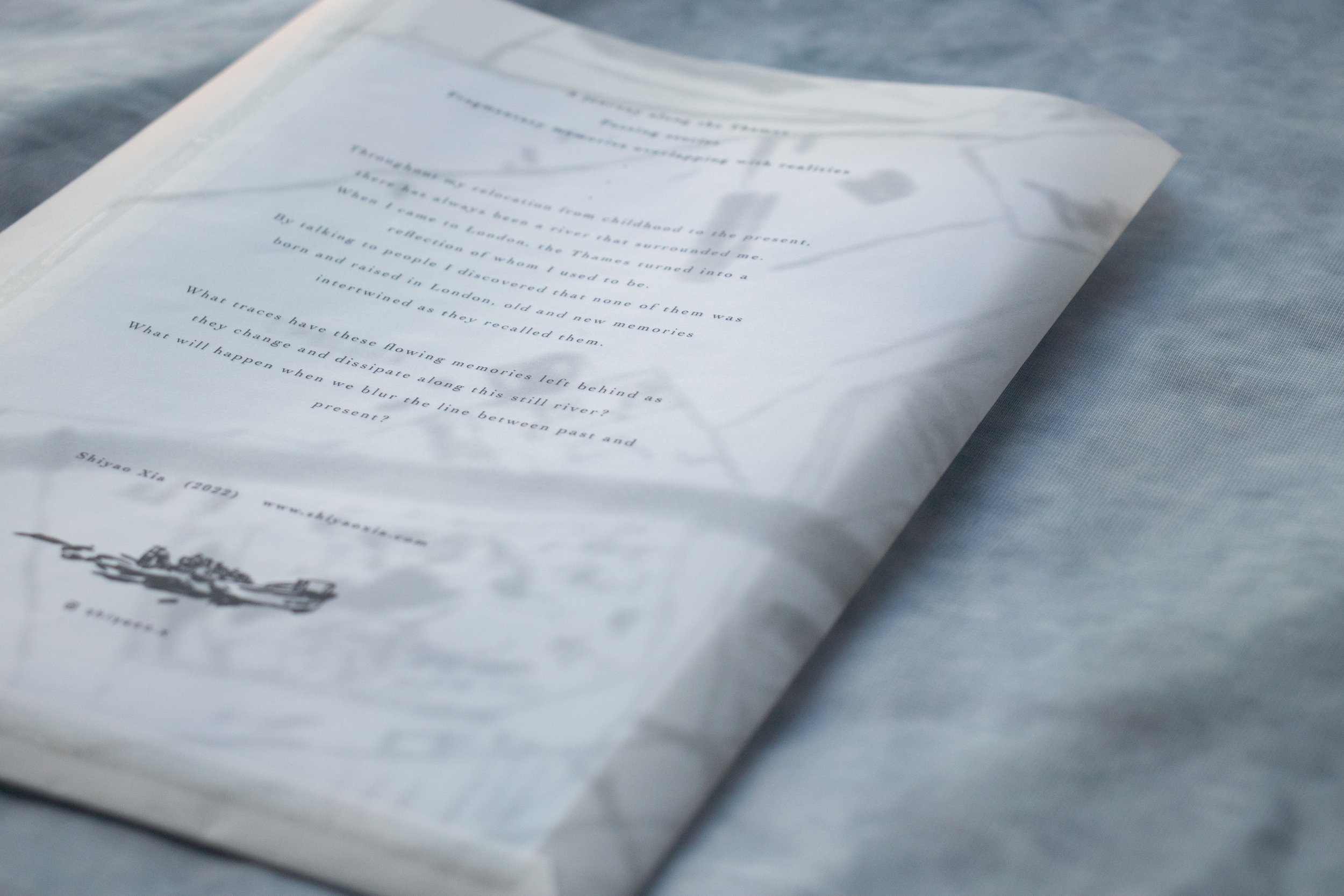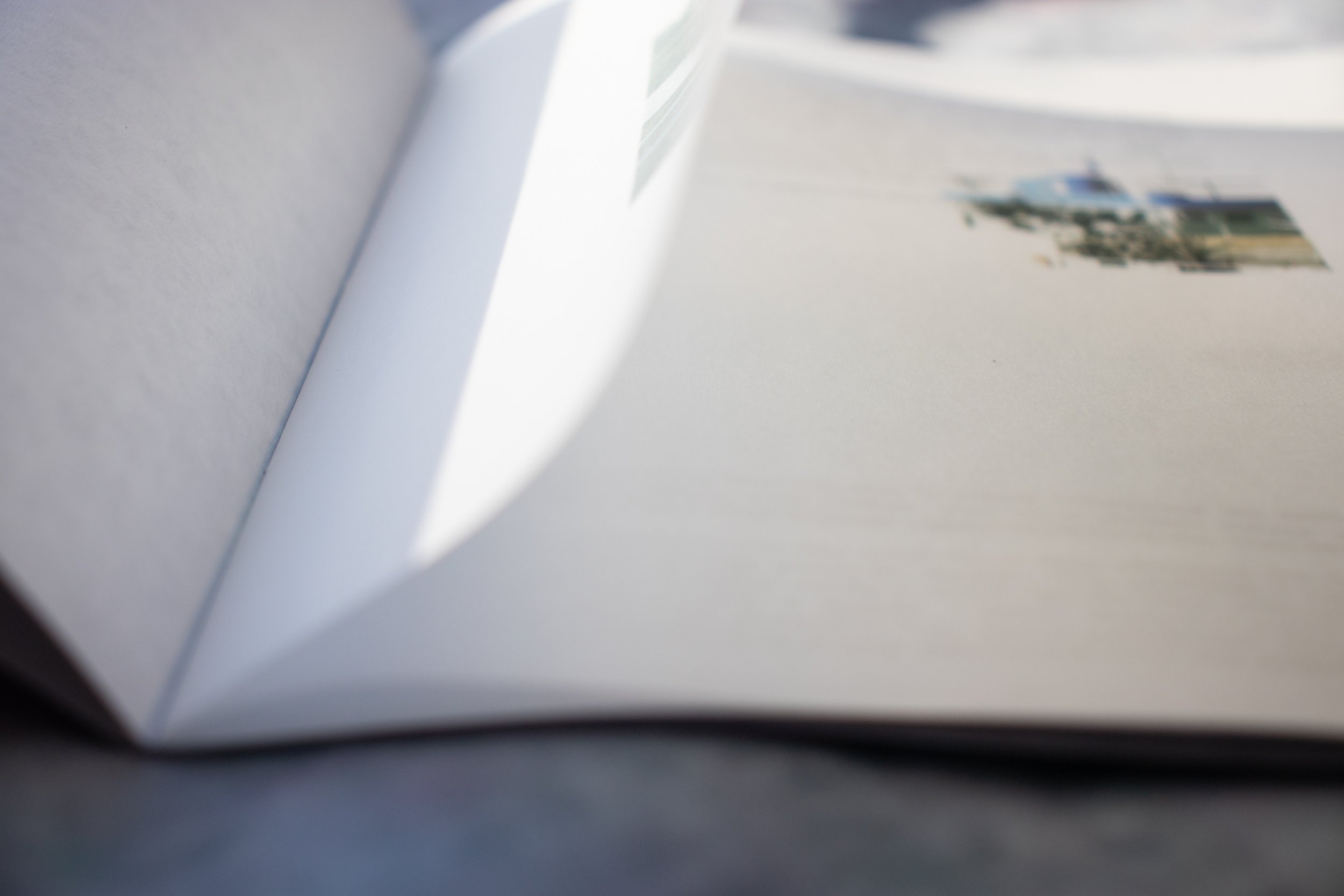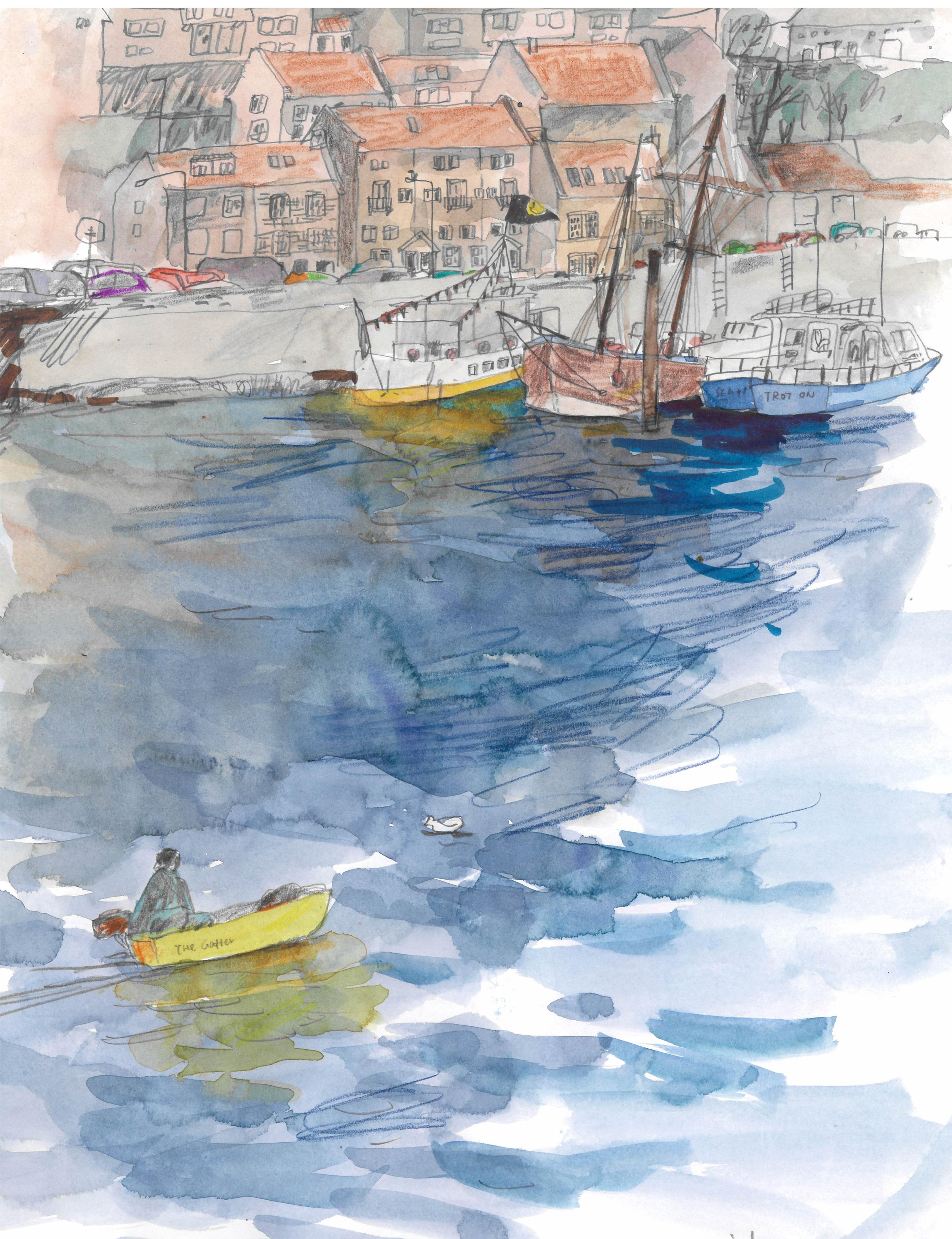Artist in conversation: Shiyao Xia
“ We often perceive time through decay, and my approach seeks to capture time slipping away in a physical manifestation.”
Shiyao Xia is a versatile artist, illustrator, and researcher whose work spans across various mediums including prints, photographs, publishing, and ceramics. She skillfully combines traditional Chinese painting techniques with contemporary practices such as printmaking and oil painting. Her art has been heavily influenced by the Chinese traditional painting she studied in her youth, which she now blends with modern forms to create unique pieces.
Xia's work delves into the concept of memory and its transitory nature, exploring how our experiences and change of place influence what we remember. She seeks to understand the relationship between memories and their multiple meanings, uncovering hidden narratives within everyday places.
Her creative process is a blend of sketching and photography, capturing her feelings in the moment. These initial impressions serve as the basis for her secondary creations. By introducing blur and texture layering to her scanned works, she imbues her images with a sense of time passing, capturing the physical manifestation of decay.
With her innovative fusion of different mediums and her constant experimentation, Shiyao Xia invites viewers on a journey of exploration and discovery, revealing the hidden stories that lie within our memories and experiences.
What initially inspired you to become an artist, and how did you develop your unique style?
I'm captivated by the easily overlooked details in everyday life—like the soft light filtering through tree leaves and the shimmering rivers in the twilight. I take pleasure in gathering these ephemeral moments from my memories and reassembling them into new narratives.
My art has been shaped by the Chinese traditional painting I studied in my youth, as well as a variety of other forms I've explored later on, such as printmaking and oil painting. I love to experiment with blending different mediums, or fusing traditional painting techniques with modern practices and photography. By introducing blur and texture layering to the scanned pieces of my work, I attempt to imbue the images with a sense of time passing. We often perceive time through decay, and my approach seeks to capture time slipping away in a physical manifestation.
In terms of subject matter, what themes or motifs do you frequently explore in your work, and what draws you to these topics?
My exploration involves a poetic "collision" between the past and present. It's like being in a lucid dream where past sensations tenderly blossom in the realm of reality. It's the emotional jolt of sensibility, along with the reactivation of memory traces, that determine the sentimental nature of these encounters.
My subjects often draw from nature, like rivers and plants, or an inconspicuous corner, as well as the silhouettes of people.
Were there specific milestones or experiences that shaped your artistic identity?
"Pieces of Thames" was my first project upon my arrival in London, as well as a significant milestone on my artistic journey. It was the first time I attempted to mix photography, painting, and text to compose a publication. This piece necessitated the gathering of an extensive array of oral histories and on-site visits while continuously experimenting with various types of paper and exploring binding techniques to achieve the desired effect of memory "overlay" vibe.
This project laid the groundwork for my future creative path, allowing me to solidify my personal visual narrative language.
Your work involves a deep exploration of memory. How does the intersection of personal and collective memory influence the stories you aim to tell through your art?
Memory shifts and shapes, elusive; a reflection of the past, yet not entirely itself. We retrace an event from our past over and over, but never in the exact same hue—memory is an experience tethered to the present. As we revisit our memories, they morph with what unfolds in our now. While the physical march of time is singular, the perception of time on a conscious level multiplies with each recalling. Through a sequence of recalling acts, I recreate these compound memories, magnifying them to present to my current self and the surrounding world
How would you describe your creative process? Are there specific rituals or routines that you find essential to your artistic practice
Sketching and photography play a big role in the early stages of my creation process; they're key for capturing what I'm feeling in the moment. After I have enough firsthand research material, I use it as a basis for my secondary creations.
How do you incorporate feedback from critics and audiences into your artistic practice, and how do you balance this feedback with your own artistic intuition?
Feedback from critics and viewers has given me fresh ways to look at my creations. It's a kind of outside nod or critique that nudges me to consider my art from various viewpoints. But even as I take in and think over the feedback, I'm big on sticking to my gut. To me, it's like a give and take between what others say and what I've got in my mind.
How do you stay motivated and inspired despite any setbacks or creative blocks you may encounter?
Art is something that relaxes you, and when you hit that inevitable dry spell of inspiration in the art-making process, I don't push myself to crank out something. Letting myself take a proper break can help soak in new inspiration. I might head to the park or a cafe to do some carefree sketches, or go for a hike and travel, or even read some books.
How do you feel about exhibiting your artworks with The Holy Art Gallery?
Having the chance to exhibit my work at the Holy Art Gallery is an exciting prospect. It allows my art to reach a diverse audience and encourages dialogue and understanding of my creations. It's an opportunity to share my visual narrative on a broader scale, which is thrilling.
Looking ahead, what are your long-term goals and aspirations as an artist, and how do you plan to achieve them?
My long-term goal is to keep creating art, hold solo exhibitions, and have my own studio in the future.
What role does emotion play in your creative process, and how do you aim to evoke specific feelings or reactions from those who view your drawings?
There is no doubt that emotion is the driving force of creation; art is the expression of inner emotions. The audience receives a portion of the emotions through the colors and lines on the canvas and makes connections, providing feedback and generating new understandings. I believe that this is the most meaningful part.








